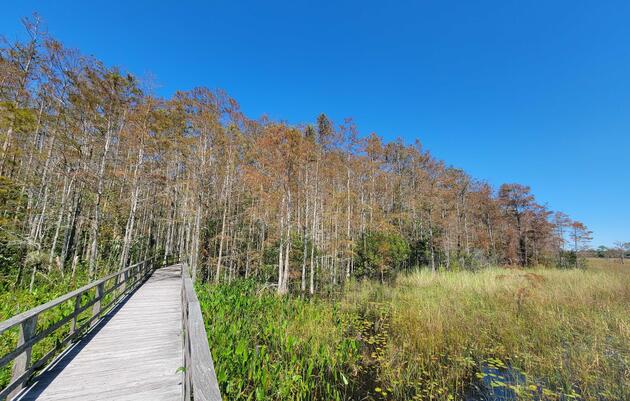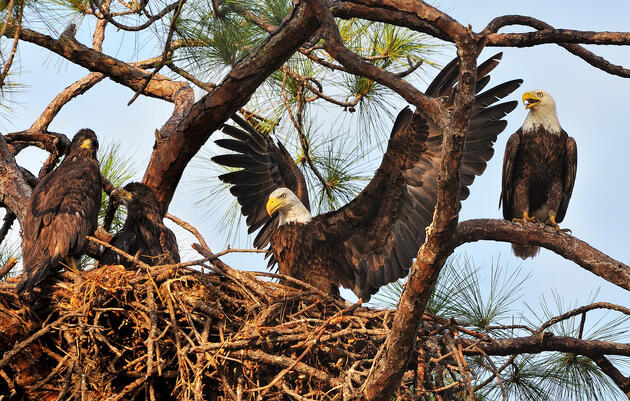Wildlife in Florida’s wetland habitats evolved with and depend on change events like hurricanes. During a storm, songbirds and other animals find a safe space to hunker down, and between the heavy gusts, venture out to grab a meal. Cypress trees bend and some branches break, leaving needles and other plant debris strewn across the landscape; the remaining canopy has become a burnished brown from the wind but will re-green in the spring.
After the storm, our team of staff and volunteers worked to rescue epiphytes, like orchids and bromeliads, that had fallen on the boardwalk, and carefully placed them back on host trees. Along the boardwalk, our team saw raccoons and deer taking advantage of new food resources revealed by wind and water, while wading birds foraged nearby in shallow wetlands, where they can access fish. Fallen branches and trees create openings for light to penetrate the canopy, allowing understory species to flourish.
A white-tailed deer forages in the wet prairie. Video by Shawn Clem.
Across the backcountry, a thick blanket of water provides new habitat for alligators, fish, and frogs that can be seen or heard nearly everywhere in the swamp right now.
Whether it is wind, water, or fire, Corkscrew Swamp Sanctuary’s ecosystem depends on periodic disturbances. Now that it is October, Southeastern sunflowers, which benefit from both fire and flood, are providing a sunny backdrop across our wet prairies.






